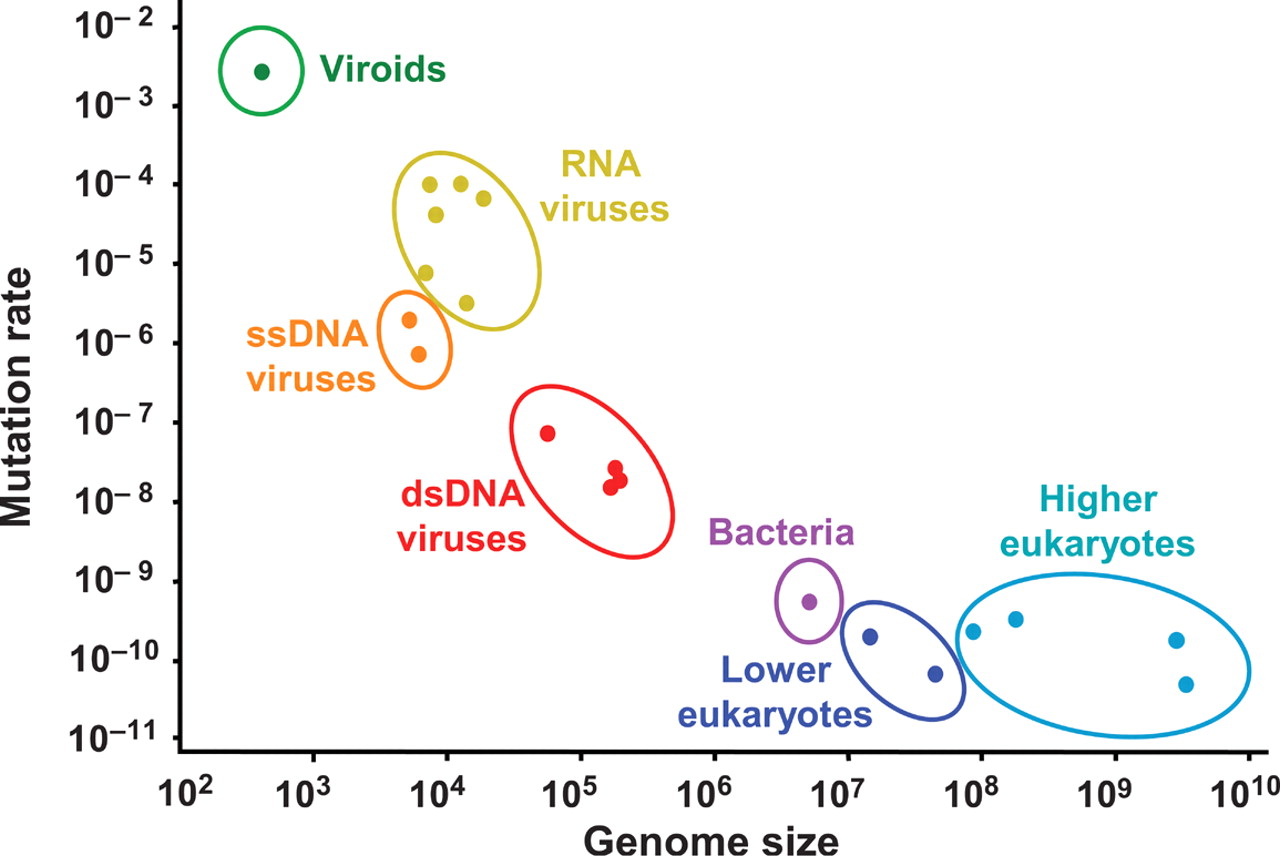Kinetic Proofreading
Richard Neher
Biozentrum, University of Basel
slides at neherlab.org/20180924_computational_system_biology_hopfield.html
Why be accurate?
- Much of biology relies on error free synthesis of very long polymers (DNA, proteins)
- If the per base/aa error rate is $\epsilon$, probability of an error free product is $e^{-\epsilon L}$
- Error free replication of a bacterial chromosome ($10^7$ bases) requires error rates $\ll 10^{-7}$
Error rates of genome replication

Sanjuan et al. 10.1126/science.1169202
 John Hopfield
John HopfieldPrinceton University
 Jaques Ninio
Jaques NinioENS Paris
Self/non-self antigen discrimination by T-cells
- T-cells scan MHC/peptide complexes for evidence infection.
- Many self-antigens, few non-self.
- Interactions energies are similar.
- Need for rapid but accurate discrimination.
 T cell receptor binding to MHC-antigen complex. Courtesy of J. Kimball
T cell receptor binding to MHC-antigen complex. Courtesy of J. Kimball
T-cells are activated via a phosphorylation cascade that implements kinetic proof reading
What limits accuracy?
Michaelis-Menten reaction
$S + E \leftrightharpoons ES \rightarrow P + E $- Biochemical reactions typically go through intermediate states.
- On rates are similar, limited by diffusion.
- Discrimination is via the off-rates
- Off-rates determine the life time of the intermediate.
- Off-rates are determined by the free energy of the transition state
- The ratio of off-rates is given by $e^{-\Delta G/kT}$. Lower limit for error rate!
- Typical energies of discrimination are low.
- DNA base pairing/stacking energies $\sim 3kT$
- Translation is based on mRNA/anti-codon interaction. Mismatches cost a few $kT$.